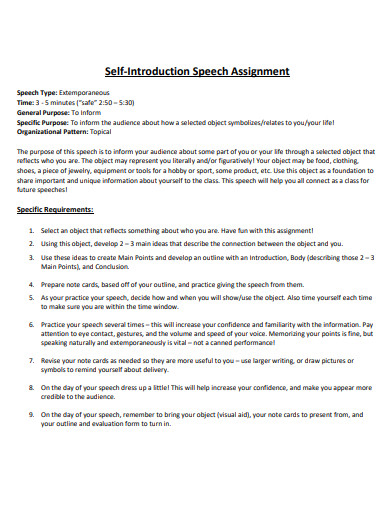How To Start A 5-Minute Speech?
Are you looking to captivate your audience with a concise yet impactful speech? Whether it’s for a presentation, a pitch, or a public speaking engagement, mastering the art of starting a 5-minute speech is essential. Crafting an engaging introduction sets the tone for the rest of your speech, grabbing your listeners’ attention from the very beginning and holding it until the end. In this guide, we will delve into the strategies and techniques that will help you kick off your speech with confidence and create a lasting impression on your audience.
Starting a speech can be daunting, but with careful planning and a sprinkle of creativity, you can leave a lasting impact in just five minutes. In this fast-paced world, where attention spans are limited, it is crucial to grab your listeners’ attention from the get-go. A compelling introduction not only hooks your audience but also sets the stage for the rest of your speech. Whether you choose to begin with a captivating story, a thought-provoking question, or a surprising statistic, your opening lines should be carefully crafted to pique curiosity and establish a strong connection with your listeners. Join us as we explore the art of starting a 5-minute speech and discover the key ingredients to captivate your audience from the very first word.
How to Start a 5 Minute Speech:
- Grab attention with a strong opening statement or question.
- Provide a brief overview of your topic to set the context.
- State your main points clearly and concisely.
- Use relevant examples or stories to engage the audience.
- Transition smoothly between each point to maintain flow.
- Conclude with a memorable summary or call-to-action.

How to Start a 5 Minute Speech
In any public speaking engagement, the opening of your speech is crucial. It sets the tone for the rest of your presentation and captures the attention of your audience. When you have a limited time of just 5 minutes to deliver your speech, it becomes even more important to make every second count. In this article, we will guide you through the step-by-step process of how to start a 5 minute speech effectively.
Step 1: Grab Attention with an Engaging Opening
The first step in starting your 5 minute speech is to grab the attention of your audience right from the beginning. You can achieve this by using a powerful opening statement, a thought-provoking question, or a compelling anecdote. The key is to make it relevant to your topic and intriguing enough to make your audience want to listen further.
For example, if your speech is about the importance of recycling, you could start by stating a shocking statistic about the amount of waste produced worldwide. This will immediately capture the attention of your audience and make them curious to hear more about the topic.
Step 2: State the Purpose and Main Points
After grabbing the attention of your audience, it is important to clearly state the purpose of your speech and outline the main points you will be discussing. This will provide a roadmap for your audience and help them understand what to expect from your presentation.
For instance, if your speech is about time management, you could say something like, “Today, I will be sharing three effective strategies for better time management that you can implement in your daily life.” This will give your audience a clear idea of what they will gain from listening to your speech and keep them engaged throughout.
Step 3: Establish Credibility and Connect with the Audience
In order to build trust and establish credibility with your audience, it is important to briefly share your qualifications or personal experiences related to the topic. This will make your audience feel more connected to you and more inclined to listen to what you have to say.
For example, if you are giving a speech about overcoming adversity, you could share a personal story of how you faced a challenging situation and came out stronger. This will not only establish your credibility as someone who has first-hand experience but also create an emotional connection with your audience.
Step 4: Preview the Content and Transition to the Body
Before transitioning into the main body of your speech, it is helpful to give a brief overview of the content you will be covering. This will provide a smooth transition and prepare your audience for what is to come.
For instance, if your speech is about the benefits of exercise, you could say something like, “In the next few minutes, I will be discussing the physical, mental, and emotional benefits of regular exercise. We will explore how exercise can improve your overall well-being and provide practical tips to incorporate it into your daily routine.”
Step 5: Engage the Audience with a Call to Action
To make your 5 minute speech impactful, it is important to end your introduction with a call to action. This can be a simple request for the audience to do something or a thought-provoking question that encourages them to reflect on the topic.
For example, if your speech is about the importance of volunteering, you could end your introduction by asking the audience, “What can you do today to make a positive impact in your community?” This will motivate your audience to think about the topic on a personal level and set the stage for the rest of your speech.
Final Thoughts
Starting a 5 minute speech effectively requires careful planning and consideration. By following the steps outlined in this article, you can create a compelling introduction that captures the attention of your audience and sets the stage for a successful presentation. Remember to practice your speech beforehand and deliver it with confidence. Good luck!
Frequently Asked Questions
Here are some commonly asked questions about how to start a 5 minute speech:
1. How do I grab the audience’s attention right from the start?
To capture your audience’s attention in the first few seconds of your speech, you can use a compelling opening statement or a thought-provoking question. Another effective technique is to share a relevant anecdote or a surprising fact that relates to your topic. This will immediately engage your listeners and make them curious to hear more.
Furthermore, you can also consider using a powerful quote or a captivating visual aid, such as a prop or a slide, to create a strong impact right from the beginning. Remember, the key is to be creative and find a hook that resonates with your audience and sets the tone for the rest of your speech.
2. What are some strategies for structuring the opening of my speech?
When structuring the opening of your speech, it’s important to have a clear and concise introduction that sets the stage for your main message. You can start by briefly explaining the purpose of your speech and outlining the key points you will be covering. This provides your audience with a roadmap of what to expect and helps them follow along more easily.
In addition, you can use a storytelling approach to connect with your audience on a personal level. By sharing a relatable experience or a personal journey, you create an emotional connection that makes your speech more engaging and memorable. Make sure to keep the introduction concise and avoid going into too much detail, as it is just a preview of what’s to come.
3. How can I establish credibility in the opening of my speech?
Establishing credibility in the opening of your speech is crucial to gain the trust and attention of your audience. One effective way to do this is by sharing your expertise or experience related to the topic you are speaking about. Highlight any relevant qualifications, achievements, or research you have conducted.
Another approach is to reference credible sources or statistics that support your main message. This demonstrates that you have done thorough research and adds credibility to your speech. Additionally, sharing personal stories or anecdotes that relate to the topic can also help establish your authenticity and connect with your audience on a deeper level.
4. How do I create a smooth transition from the opening to the body of my speech?
A smooth transition from the opening to the body of your speech is essential to maintain the flow and coherence of your message. One effective technique is to use a connecting statement or a bridge that links the introduction to the main points you will be addressing.
For example, you can use phrases like “Now that we have established the importance of [topic], let’s delve into the key factors that contribute to it.” This helps your audience understand the logical progression of your speech and prepares them for what’s to come.
5. Should I include a call to action in the opening of my speech?
While including a call to action in the opening of your speech can be effective in certain situations, it is not always necessary. A call to action is a statement that motivates your audience to take a specific action or change their behavior based on the information you provide.
If your speech is focused on raising awareness or sharing information, you may choose to save the call to action for the conclusion. However, if your intention is to inspire or persuade your audience, including a call to action in the opening can create a sense of urgency and engagement right from the start. Consider the purpose and tone of your speech to determine whether a call to action is appropriate in the opening or better suited for the conclusion.
In conclusion, starting a 5-minute speech in English can be a daunting task, but with the right strategies and techniques, it can become an opportunity to captivate and engage your audience. Remember to begin with a strong, attention-grabbing opening that hooks your listeners from the start. Whether it’s a relevant anecdote, a thought-provoking question, or a surprising statistic, make sure it is relevant to your topic and sets the tone for the rest of your speech.
Furthermore, it is essential to structure your speech in a clear and organized manner. Divide your content into relevant sections or key points that flow logically, and use transition words and phrases to guide your audience through your ideas. Additionally, incorporate storytelling or personal experiences to make your speech relatable and memorable. Finally, practice and rehearse your speech to build confidence and ensure smooth delivery, keeping in mind the time limit to effectively convey your message.
In conclusion, by implementing these strategies, you will be able to start your 5-minute speech confidently and engage your audience right from the beginning. Remember to be authentic, passionate, and concise in your delivery, and most importantly, enjoy the experience of sharing your knowledge or ideas with others.

